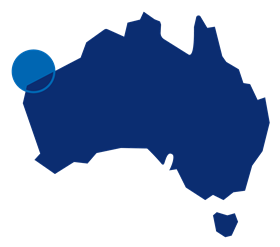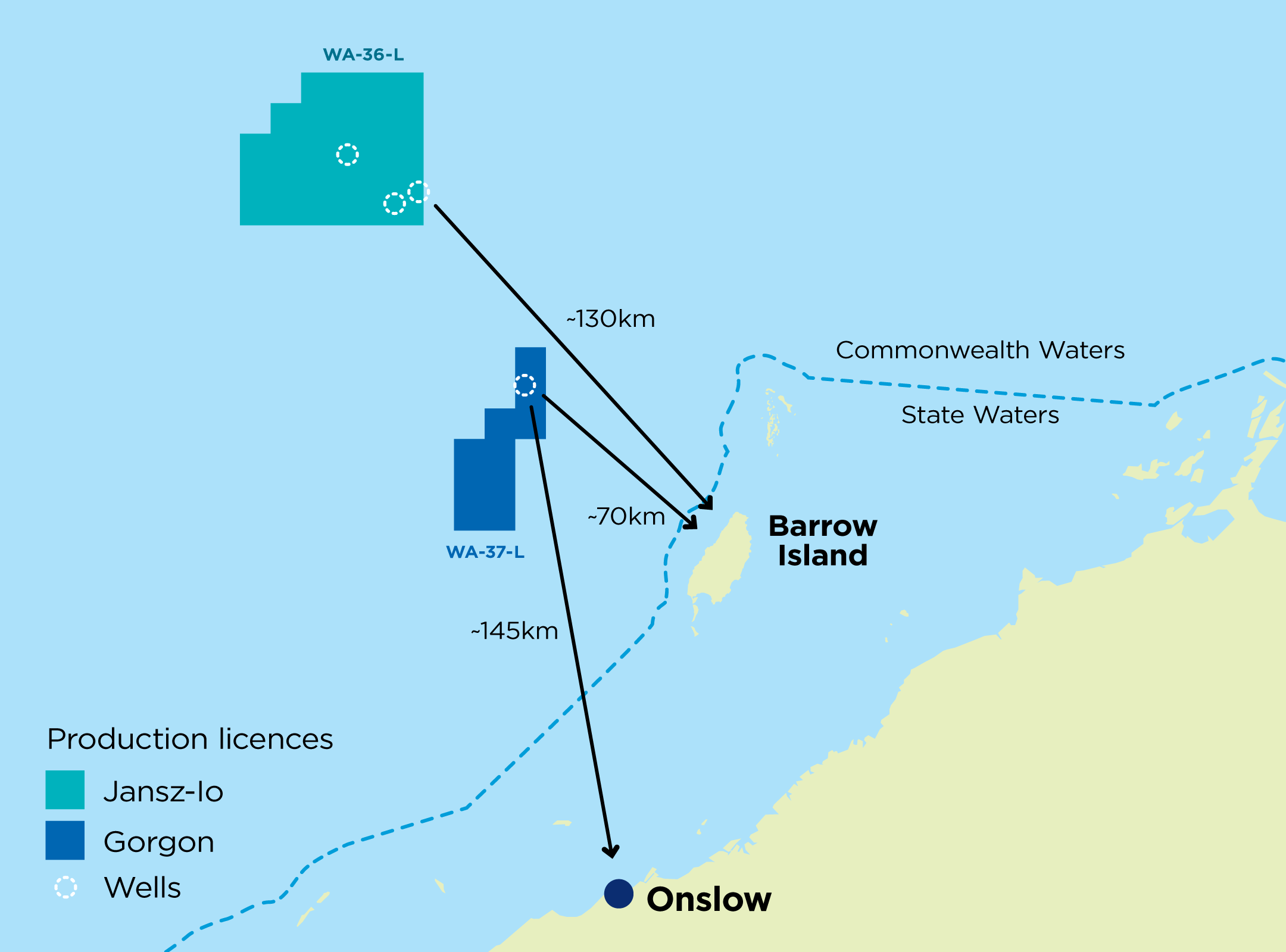relevant persons information
gorgon and jansz wellhead in situ decommissioning
Chevron Australia, on behalf of the Gorgon Joint Venture, operates the Gorgon Project (Gorgon) in Western Australia.
Gorgon comprises offshore production wells and pipeline infrastructure that gathers natural gas from the Jansz-Io and Gorgon gas fields and transports it to a facility on Barrow Island for processing.
In 2009, petroleum titles WA-36-L, WA-37-L, WA-38-L, WA-39-L and WA-40-L were transferred to the Gorgon Joint Venturers, and Chevron Australia became the nominated titleholder.
The titles contain four non-operational appraisal wells. The wells were plugged and abandoned between 1994 and 2009, and Chevron intends to leave the well infrastructure in place.
Following consultation and consideration of relevant persons' feedback, Chevron Australia has submitted the Gorgon Gas Development Gorgon and Jansz Wellhead Decommissioning Environment Plan to NOPSEMA for assessment and acceptance. To view, please visit https://info.nopsema.gov.au/
location and water depth

The North Gorgon-2 well is located within production licence WA-37-L about 70 kilometres northwest of Barrow Island. The Jansz-2, Jansz-3, and Jansz-4 wells are located within production licence WA-36-L approximately 130 to 150 kilometres northwest of Barrow Island. See table 2.
Each wellhead extends about four metres above the seabed and covers an area of about nine square metres.
Jump to detailed maps below
activity summary
The Offshore Petroleum and Greenhouse Gas Storage Act 2006 requires a titleholder to remove all property within the title area that is neither used nor to be used in connection with the operations authorised by the title, or implement an approved alternative. Government policy and guidelines allow in situ decommissioning if it achieves equal or better environmental outcomes compared to complete removal, and if it meets requirements including well integrity and safety.
Chevron proposes leaving the well infrastructure in situ.
EMBA – environment that may be affected
Leaving the well infrastructure in situ has the potential for environment interactions, known as ‘aspects’.
‘Aspects’ may present environmental risks within the operational area if left unmanaged. Table 1 lists the potential environmental impacts, risks and control measures.
There is no emergency condition associated with leaving the infrastructure in situ because the wells have been plugged and abandoned.
For the purpose of the Environment Plan, the environment that may be affected (EMBA) has been defined as a 500m radius around each wellhead. Corrosion of each wellhead is expected to result in a smaller footprint where seabed disturbance may occur due to the presence and breakdown of the wellhead and release of breakdown product (mostly iron).
marine exclusion zone
approvals process
Petroleum activities in Commonwealth waters are regulated by the National Offshore Petroleum Safety and Environmental Management Authority (NOPSEMA). Before petroleum activities can take place, Chevron Australia must develop an Environment Plan which will be assessed by NOPSEMA in accordance with the requirements of the Offshore Petroleum and Greenhouse Gas Storage (Environment) Regulations (2009). These regulations require Chevron Australia to consult with relevant persons whose functions, interests and activities may be affected by the petroleum activity.
The Environment Plan will describe the environment in which the petroleum activity takes place, provide an assessment of the potential environmental impacts and risks arising from the activity, and identify control measures to manage environmental impacts and risks to acceptable levels that are as low as reasonably practicable.
The Environment Plan outlines how Chevron Australia has engaged with ‘relevant persons’, whose interests, functions, and activities may be affected and how their feedback has been considered and addressed.
impacts, risks and proposed controls
Summary of impacts/risks and key proposed controls – view Table 1.
your feedback
The initial consultation period has now concluded, however if you consider you may be a relevant person, you can contact us tollfree at 1800 225 195 or leave feedback online below.
If a relevant person asks that their feedback be treated as confidential, Chevron Australia will make this known to NOPSEMA.
what's next
Your feedback during the consultation period will be considered and incorporated into the environment plan.
We commit to keeping you informed and providing responses to any relevant person who so requests.
privacy notice
If you choose to provide feedback on this proposal, Chevron Australia will collect your name and contact details, in addition to your comments, for the purposes of maintaining contact with you and inclusion of your feedback in our submission to NOPSEMA. Provision of this information is purely voluntary, however if you choose not to provide it, we may not be able to contact you in the future regarding your submission. Chevron may transfer your information to NOPSEMA, if required and if you do not identify it as sensitive, and to other Chevron affiliates including our head office based in the United States. For further information regarding how we protect your personal information, and your rights, please refer to our privacy notice.
further information

Figure 1. Location of the wellheads.
Table 1: Summary of impacts/risks and key proposed controls – view here.
Table 2: Production well coordinates and approximate water depths – view here.
resources
- Consultation in the course of preparing an environment plan – NOPSEMA pdf opens in new window
- Environment plan content requirements – NOPSEMA pdf opens in new window
- Environmental requirements – NOPSEMA opens in new window
- Offshore Petroleum and Greenhouse Gas Storage (Environment) Regulations opens in new window
- NOPSEMA Assessment Process Environment Plans opens in new window
- Chevron Operational Excellence Management System (OEMS) opens in new window
